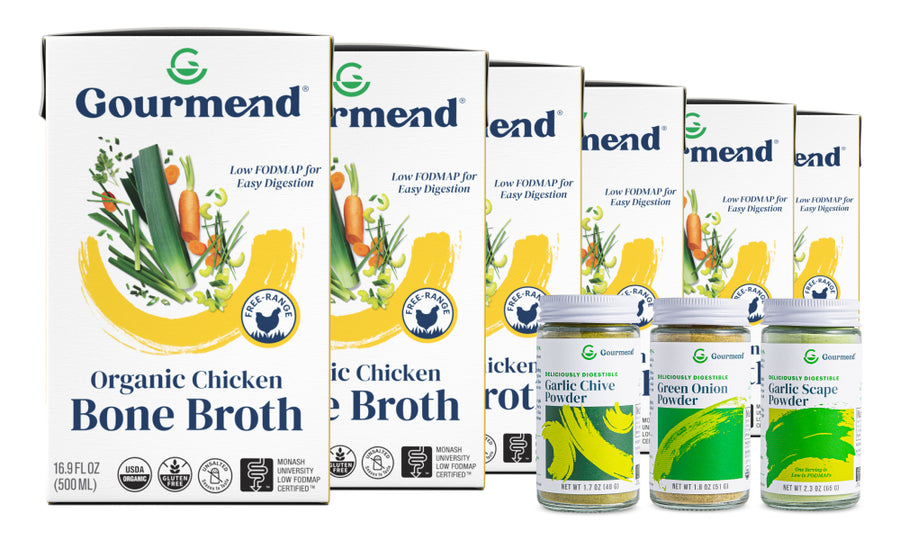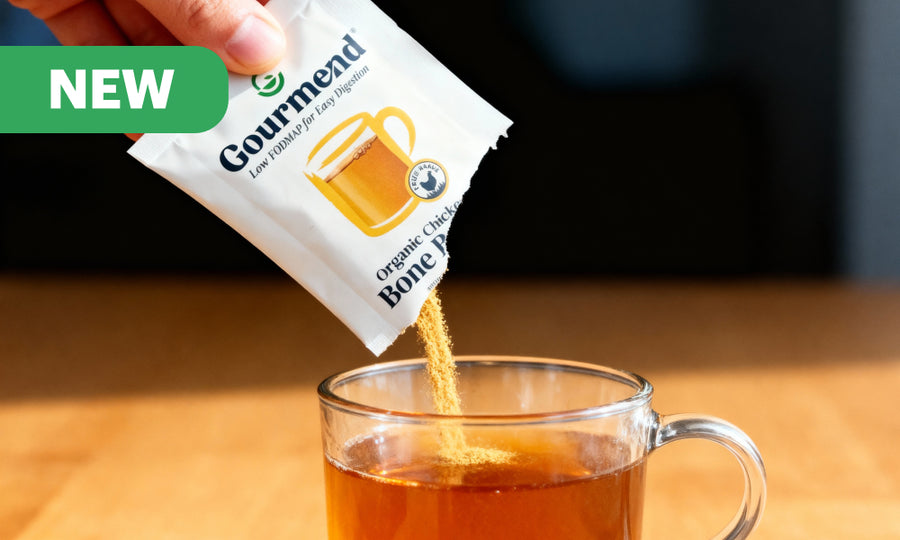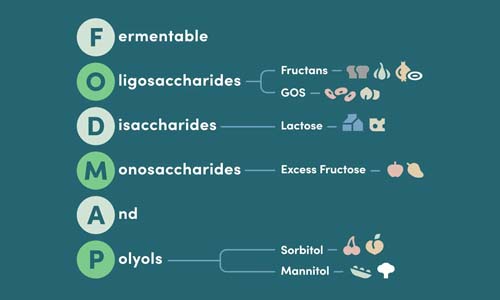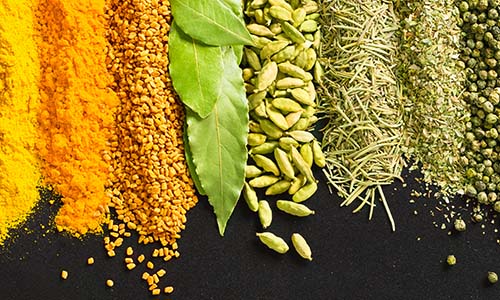Turkey Bone Broth Recipe: 5 Easy Steps to Gut Health
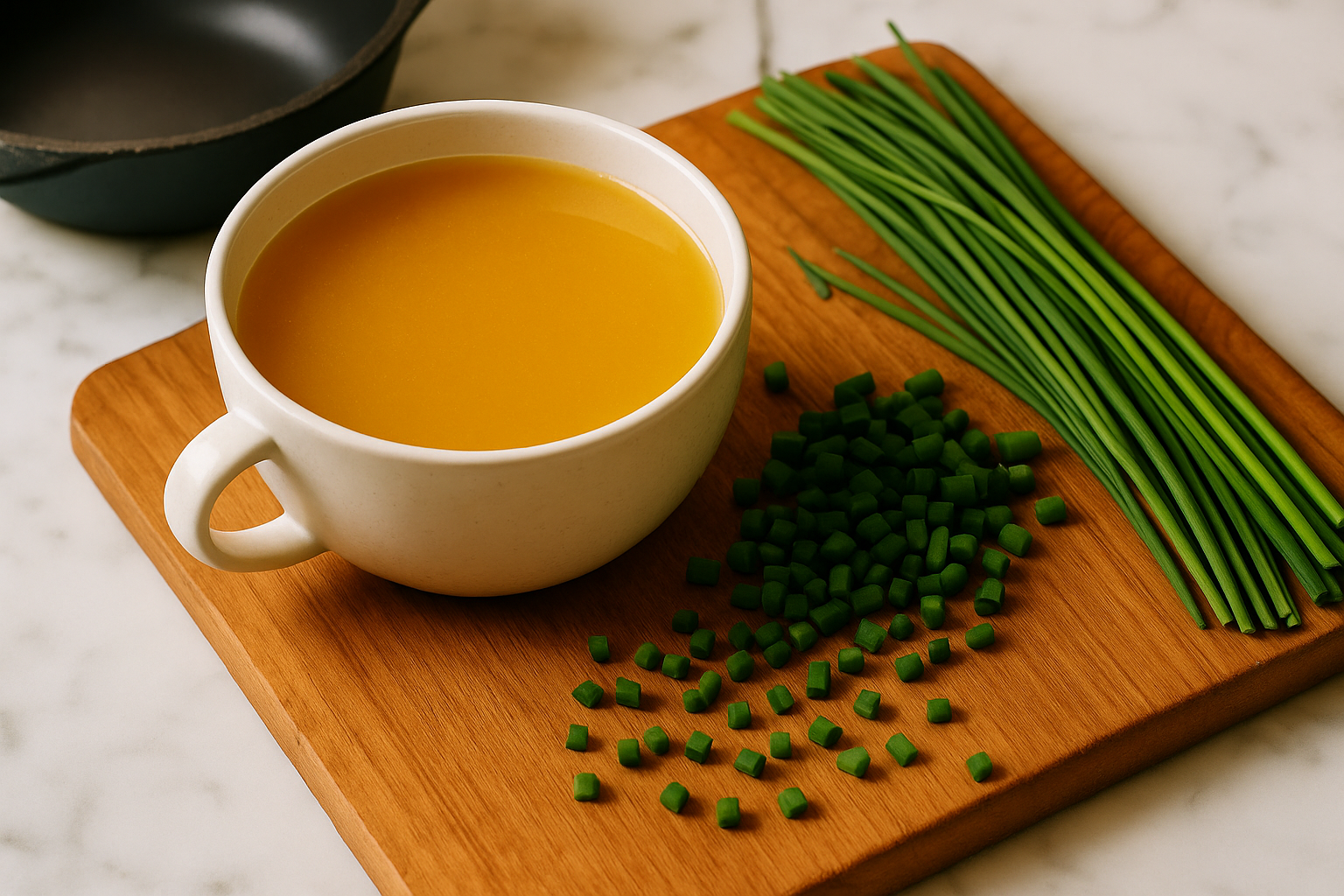
Quick Answer
Turkey bone broth is made by simmering turkey bones, skin, and carcass for 8-24 hours to extract collagen, gelatin, and minerals. The result is a nutrient-dense, gut-friendly liquid that gels when chilled and provides superior flavor compared to regular broth.
Key Takeaways
- Turkey bone broth is made by simmering turkey bones, skin, and carcass for 8-24 hours.
- The long simmering process extracts collagen, gelatin, and minerals from the bones.
- The broth is nutrient-dense and supports gut health.
- When chilled, the broth gels due to its high gelatin content.
- Turkey bone broth offers superior flavor compared to regular broth.
Turkey bone broth has emerged as a powerhouse superfood, transforming leftover holiday bones into liquid gold packed with gut-healing nutrients. This ancient cooking method extracts maximum collagen, gelatin, and minerals from turkey bones through extended simmering, creating a rich, flavorful base that's gentle on digestion.
Here's the thing: there's often confusion between broth, stock, and bone broth. Understanding these differences will help you create the most nutritious turkey bone broth possible. The Gourmend Foods "broth" (both chicken and beef) are actually bone broths, which explains their rich, gelatinous texture and superior nutritional profile.
Key Fact: Two-thirds of Americans experience digestive issues, making gut-friendly foods like turkey bone broth increasingly valuable for daily wellness.
What is Turkey Bone Broth?
Turkey bone broth is a nutrient-dense liquid created by simmering turkey bones, skin, and carcass for 8-24 hours to extract collagen, gelatin, amino acids, and minerals.
Definition & Overview
Turkey bone broth represents the pinnacle of nose-to-tail cooking, transforming what many consider scraps into a nutritional powerhouse. The process involves simmering turkey bones, skin, and carcass for an extended period—typically 8 to 24 hours—to extract every bit of collagen, gelatin, minerals, and amino acids locked within the bones.
The magic happens in the connective tissues. Turkey wings, joints, and areas where skin meets bone contain the highest concentrations of collagen. When subjected to low, slow heat, these tissues break down into gelatin, creating that characteristic jiggle when your finished broth cools in the refrigerator.
For best results, always include bones with skin and connective tissue. Turkey wings are particularly valuable—they're collagen goldmines that create incredibly gelatinous, nutrient-rich broth.
Bone Broth vs. Stock vs. Broth: Understanding the Differences
You might be wondering about the difference between these three similar-sounding liquids. Here's the breakdown:
- Broth
- Made by simmering meat, poultry, or vegetables in water for 2-4 hours. It's typically thinner and more flavorful than stock, often used as a base for soups or sauces. The shorter cooking time means less nutrient extraction from bones.
- Stock
- Created by simmering bones, meat, vegetables, and herbs for 3-8 hours. It's thicker and richer than broth due to gelatin released from bones, resulting in more robust flavor and better mouthfeel.
- Bone Broth
- The longest simmer of all—12-24 hours or more—to extract maximum nutrients from bones. Known for its gelatinous texture when chilled, rich flavor, and concentrated collagen content. This is what we're making with our turkey bone broth recipe.
Important Note: Many commercial products labeled as "broth" are actually closer to stock or even bone broth in their preparation method. Quality matters significantly in the final product's nutritional value.
Health Benefits of Turkey Bone Broth

Turkey bone broth isn't just delicious—it's a functional food that supports multiple aspects of health. Research shows that the nutrients extracted during the long simmering process offer genuine benefits for digestion, inflammation, and overall wellness. Learn more about the health benefits of bone broth from the Canadian Digestive Health Foundation.
Supports Gut Health and Digestive Comfort
The star players for digestive health are glutamine, glycine, proline, and gelatin. Glutamine serves as fuel for intestinal cells, helping maintain the gut lining's integrity. Glycine supports the production of stomach acid and bile salts, improving digestion. The gelatin in turkey bone broth may help reduce intestinal inflammation and support easier digestion.
For those following a low FODMAP approach to manage IBS symptoms, turkey bone broth offers rich flavor without common trigger ingredients like onion and garlic bulbs.
Hormone and Menstrual Cycle Support
Turkey bone broth provides essential minerals including calcium, magnesium, and potassium. These minerals play crucial roles in hormone production and regulation. Magnesium, in particular, may help reduce PMS symptoms and support healthy ovulation cycles.
Thyroid and Metabolism Support
The mineral content in turkey bone broth supports thyroid function by providing cofactors needed for converting T4 to the active T3 thyroid hormone. A well-functioning thyroid means better metabolism, energy levels, and temperature regulation.
Promotes Healthy Skin, Nails, and Hair
Collagen is the most abundant protein in our bodies, and turkey bone broth provides it in an easily absorbed form. Regular consumption may support skin elasticity, nail strength, and hair health as we age and our natural collagen production declines.
Turkey Bone Broth Nutrients at a Glance:
- Collagen and gelatin for joint and skin health
- Glycine for better sleep and muscle relaxation
- Glutamine for gut lining support
- Calcium, magnesium, and phosphorus for bone health
- Amino acids for immune function
Reduces Inflammation
The amino acid profile in turkey bone broth, particularly glycine and proline, supports the body's natural anti-inflammatory processes. These compounds help regulate immune function and may reduce chronic inflammation markers. See recent research on bone broth and inflammation.
Enhances Relaxation and Sleep Quality
Magnesium and glycine work together to promote muscle relaxation and nervous system calm. Many people find that drinking warm bone broth in the evening supports better sleep quality and helps them unwind from daily stress.
Ingredients Needed for Turkey Bone Broth
Creating exceptional turkey bone broth starts with quality ingredients. The beauty lies in its simplicity—you need surprisingly few components to create something truly nourishing.
Primary Ingredients
Your foundation ingredients determine the final broth's richness and nutritional value:
- Turkey carcass with bones, skin, and scraps - Include wings for maximum gelatin content
- Filtered cold water - Enough to cover bones by 2 inches
- Apple cider vinegar (optional) - 1-2 tablespoons to aid mineral extraction
Turkey wings are your secret weapon. They contain more connective tissue than other parts, creating that perfect gel when your broth cools.
Flavor and Nutrient Boosters
For those avoiding high FODMAP ingredients, we'll use gut-friendly alternatives that deliver incredible flavor:
- Chives - Instead of onion bulbs, for bright, savory notes
- Leek green tops - The green parts only, avoiding the white bulb portion
- Scallion greens - Green parts only for onion-like flavor without digestive triggers
- Carrots - Natural sweetness and beta-carotene
- Celery - Classic aromatic base with minerals
- Garlic chives or garlic scapes - Garlic flavor without the bulb
Why These Swaps Matter: We use the green parts of scallions and leeks instead of onion bulbs—they offer bright, savory flavor without triggering digestive discomfort for sensitive individuals.
Herbs and Spices
Add these during the final stages of cooking to preserve their delicate flavors:
- Bay leaves - Earthy, subtle complexity
- Fresh thyme - Herbaceous and warming
- Black peppercorns - Gentle heat and depth
- Fresh parsley - Brightness and mineral content
- Rosemary - Piney, aromatic notes
- Sage - Perfect complement to turkey's natural flavor
Optional umami boosters include oyster mushrooms or a small piece of nori seaweed—both add natural depth without overwhelming the turkey's delicate flavor profile.
How to Make Turkey Bone Broth

To make turkey bone broth, simmer turkey bones with apple cider vinegar and water for 8-24 hours, adding vegetables in the final hour and herbs in the last 30 minutes for optimal flavor extraction.
Creating exceptional turkey bone broth requires patience and proper technique. The key is low, slow heat that gently extracts nutrients without creating a cloudy, harsh-tasting result. Here's everything you need to know to make restaurant-quality bone broth at home. For more inspiration on gut-friendly cooking, check out our Low FODMAP Recipes blog.
General Tips for Success
Temperature control makes the difference between amateur and professional results. Never let your broth reach a rolling boil—gentle simmering preserves clarity and prevents the proteins from becoming tough.
- Start with cold filtered water - Cold water helps extract more nutrients gradually
- Add apple cider vinegar early - 1-2 tablespoons per pot helps break down collagen
- Maintain gentle simmer - Bubbles should barely break the surface
- Add vegetables late - Final hour prevents overcooking and bitterness
- Herbs go in last - 20-30 minutes preserves delicate flavors
- Salt at the end - Broth concentrates as it cooks
- Cool rapidly - Food safety requires quick temperature reduction
Stovetop Method
The stovetop method gives you complete control over temperature and timing, making it our preferred approach for turkey bone broth.
- Prepare the bones: Place turkey carcass, wings, skin, and any accumulated drippings in a large stockpot. Break up larger bones if needed to fit comfortably.
- Add acid and water: Pour in 1-2 tablespoons apple cider vinegar, then cover bones completely with cold filtered water, leaving 2 inches of space at the top.
- Initial heating: Bring to a gentle boil over medium-high heat. You'll see foam and scum rise to the surface—skim this off with a ladle for clearer broth.
- Long simmer: Reduce heat to low and maintain a gentle simmer for 10-24 hours. The longer you simmer, the more nutrients you'll extract. Minimum 8 hours for decent results.
- Add aromatics: During the final hour, add chopped carrots, celery, chives, leek green tops, and scallion greens. If using garlic chives or garlic scapes, add them now too.
- Finish with herbs: In the last 20-30 minutes, add bay leaves, thyme, peppercorns, and any other herbs you're using.
- Strain and cool: Remove from heat and strain through a fine-mesh strainer. Cool rapidly by placing the pot in an ice bath or transferring to smaller containers.
Pro Tip: We use chives and leek green tops instead of onions—they provide that essential savory depth without causing digestive discomfort for sensitive individuals.
Slow Cooker Method
Perfect for busy schedules, the slow cooker method requires minimal attention while delivering excellent results.
- Load the slow cooker: Add turkey bones, skin, accumulated juices, and apple cider vinegar to your slow cooker.
- Add water: Cover with cold filtered water, leaving 1 inch of space at the top.
- Set and forget: Cook on low for 8-18 hours. The longer cooking time extracts maximum nutrients.
- Add vegetables: If your slow cooker has space, add chopped vegetables during the last 1-2 hours.
- Finish with herbs: Add herbs for the final 30 minutes of cooking.
- Strain and store: Strain through fine-mesh strainer and cool before refrigerating.
Instant Pot/Pressure Cooker Method
The fastest method, though it may produce slightly less gelatinous results compared to slow-cooking methods. If you enjoy experimenting with different cooking techniques, you might also like our Simple Low FODMAP Gourmet Risotto recipe.
- Combine ingredients: Place bones, vinegar, water, and vegetables in the Instant Pot.
- Pressure cook: Cook on high pressure for 2-4 hours with natural pressure release.
- Add herbs: After cooking, add herbs and let steep for 10-20 minutes.
- Strain and cool: Strain and cool rapidly before storing.
Time Investment: While bone broth requires long cooking times, most of that is hands-off simmering. Active prep time is typically just 30-45 minutes.
Storage and Shelf Life
Proper storage ensures your turkey bone broth maintains its nutritional value and flavor while staying food-safe. Here's how to handle your liquid gold correctly.
Storage Timeline:
- Refrigerator: 5 days in sealed containers
- Freezer: Up to 12 months in freezer-safe containers
- Room temperature: Maximum 2 hours before refrigeration required
Refrigerator Storage
Store turkey bone broth in wide-mouth glass jars or BPA-free plastic containers. Wide-mouth containers make it easier to remove the solidified fat layer that forms on top when chilled. Leave about an inch of headspace to allow for expansion.
That gelatinous texture when chilled is exactly what you want—it indicates successful collagen extraction. The broth will return to liquid form when reheated.
Freezer Storage
For longer storage, freeze turkey bone broth in portions that match your typical usage. Ice cube trays work perfectly for small amounts, while larger containers suit soup-making needs. Always leave room for expansion—frozen liquids expand by about 9%.
Label containers with the date and contents. Frozen bone broth maintains quality for up to 12 months but is safe indefinitely when kept at 0°F or below.
Rapid Cooling for Food Safety
Cool your turkey bone broth quickly to prevent bacterial growth. The FDA recommends cooling hot foods from 140°F to 70°F within 2 hours, then from 70°F to 40°F within another 4 hours.
- Transfer to shallow containers for faster cooling
- Use an ice bath around the container
- Stir occasionally to distribute heat evenly
- Never put hot broth directly in the refrigerator—it raises the internal temperature
Tips for the Perfect Turkey Bone Broth

Creating exceptional turkey bone broth is part science, part art. These professional techniques will elevate your homemade broth from good to extraordinary. For more tips on gut-friendly cooking, visit our Learn blog.
Maximize Collagen Extraction
Keep skin and fat on bones throughout the cooking process. These tissues contain concentrated collagen that transforms into gelatin during the long simmer. Turkey wings, necks, and knuckle joints are particularly rich in connective tissue.
Bone Selection Strategy: Mix different types of turkey bones—wings for collagen, leg bones for minerals, and carcass pieces for flavor complexity.
Temperature Control Mastery
Maintain a gentle simmer throughout cooking. Vigorous boiling creates cloudy broth and can make proteins tough. You should see just a few bubbles breaking the surface—any more aggressive and you risk compromising both clarity and texture.
Timing Aromatics Perfectly
Add vegetables during the final hour to prevent overcooking, which can create bitter flavors. Herbs go in during the last 20-30 minutes to preserve their delicate essential oils. This timing ensures bright, clean flavors in your finished broth.
Save turkey bones in the freezer until you have enough for a full batch. Frozen bones can go straight into the pot—no thawing required.
Seasoning Strategy
Salt only at the end of cooking. As your broth simmers and reduces, flavors concentrate. What tastes perfectly seasoned at hour 2 might be overly salty by hour 12. Season the finished, strained broth to taste.
Achieving Crystal-Clear Broth
For restaurant-quality clarity, strain your finished broth through a coffee filter or cheesecloth-lined fine-mesh strainer. This removes the finest particles that can make broth appear cloudy.
If your broth doesn't gel when chilled, don't worry—it's still nutritious and delicious. Next time, try using more joints and connective tissue, or simmer longer for increased collagen extraction.
Natural Flavor Enhancement
For deeper umami notes without high FODMAP ingredients, try adding a small piece of nori seaweed or a few oyster mushrooms during the final hour. These natural flavor enhancers complement turkey's mild taste without overwhelming it.
- Roast bones before simmering for deeper, richer flavor
- Use a mix of raw and cooked bones for complexity
- Add lemon or lime zest in the final 10 minutes for brightness
- Include parsley stems (not just leaves) for mineral content
7 Delicious Ways to Use Turkey Bone Broth
Your homemade turkey bone broth is incredibly versatile, serving as both a standalone wellness drink and a flavor-building ingredient in countless recipes. Here are our favorite ways to put this liquid gold to work.
Sipped Warm as a Gut-Healthy Drink
Enjoy turkey bone broth as a protein-rich morning beverage or afternoon pick-me-up. Heat a mug of broth and season with a pinch of sea salt, fresh herbs, or a squeeze of lemon. This simple preparation delivers easily absorbed nutrients while supporting digestive comfort.
Perfect for Sensitive Stomachs: Unlike coffee or tea, warm bone broth is gentle on digestion and provides sustained energy without caffeine crashes.
Base for Hearty Soups and Stews
Turkey bone broth elevates any soup recipe with its rich, complex flavor profile. Use it as the liquid base for turkey and vegetable soups, grain-based stews, or creamy bisques. The natural gelatin adds body and mouthfeel that water or store-bought broth simply can't match. Try pairing your homemade broth with our Low FODMAP Crisp Roasted Baby Potatoes for a comforting meal.
Sauce and Gravy Enhancement
Replace water or wine in pan sauces and gravies with turkey bone broth for deeper flavor and better texture. The natural gelatin helps sauces achieve that glossy, restaurant-quality finish while adding nutritional value.
Braising Liquid for Meats and Vegetables
Use turkey bone broth as braising liquid for pot roasts, short ribs, or even hearty vegetables like carrots and parsnips. The long, slow cooking process infuses ingredients with flavor while the collagen content creates incredibly tender results.
Liquid for Cooking Grains
Replace water with turkey bone broth when cooking rice, quinoa, or other grains. This simple swap adds protein, minerals, and savory depth to what might otherwise be bland side dishes. Use a 1:1 ratio as you would with water.
For low FODMAP grain options, stick with rice, quinoa, and oats. These provide excellent nutrition without triggering digestive discomfort.
Universal Broth Substitute
Turkey bone broth works as a 1:1 substitute for chicken or beef broth in virtually any savory recipe. Its mild, versatile flavor complements rather than competes with other ingredients, making it perfect for everything from risottos to casseroles.
Creative Wellness Applications
Adventurous home cooks are incorporating turkey bone broth into unexpected applications like bone broth lattes, savory smoothies, and even as the liquid component in homemade bone broth ice cubes for easy portion control.
Quick Usage Guide:
- Morning drink: 1 cup warmed with sea salt and herbs
- Soup base: 4-6 cups per recipe serving 4-6 people
- Grain cooking: 1:1 ratio replacing water
- Braising: Enough to cover ingredients halfway
- Sauce reduction: 1-2 cups reduced by half
Mastering Turkey Bone Broth at Home
Creating exceptional turkey bone broth at home is both simpler and more rewarding than most people realize. With just a few quality ingredients and proper technique, you can produce a nutrient-dense, flavorful base that rivals any restaurant or premium store-bought option.
The beauty of homemade turkey bone broth lies in its versatility and control—you know exactly what goes into every batch, from the quality of bones to the final seasoning.
Why Homemade Makes the Difference
When you make turkey bone broth from scratch, you're extracting maximum nutrients through extended simmering time that commercial producers simply can't match. Store-bought options often rely on shortcuts—artificial flavors, excessive sodium, or abbreviated cooking times that compromise both nutrition and taste.
Remember: The Gourmend Foods "broth" (both chicken and beef) are actually bone broths, slow-simmered for maximum nutrition and made with gut-friendly ingredients like chives and leek green tops instead of onions.
Your homemade version delivers authentic gelatin content, naturally extracted minerals, and clean flavors without additives or preservatives. Plus, you control the sodium content and can customize flavors to match your family's preferences and dietary needs.
Cost-Effectiveness and Sustainability
Making turkey bone broth transforms what would typically be food waste into liquid gold. Turkey carcasses, often discarded after holiday meals, become the foundation for weeks' worth of nutritious broth. This approach reduces food waste while providing exceptional value—homemade bone broth costs a fraction of premium store-bought versions.
Value Comparison:
- Homemade cost: $2-4 per quart using leftover bones
- Premium store-bought: $8-12 per quart
- Yield from one turkey: 3-4 quarts of rich bone broth
- Storage flexibility: Freeze in portions for up to 12 months
Nutritional Investment for Long-Term Health
Regular consumption of homemade turkey bone broth provides sustained nutritional benefits that extend far beyond individual meals. The bioavailable minerals, amino acids, and collagen support digestive health, joint function, and overall wellness in ways that synthetic supplements often can't match.
Gentle Nutrition: For those managing digestive sensitivities or following low FODMAP guidelines, homemade turkey bone broth offers clean nutrition without common trigger ingredients.
The glycine and glutamine naturally present in bone broth support gut lining integrity, while the mineral content aids in everything from bone health to proper muscle function. These benefits compound over time, making regular bone broth consumption a valuable investment in long-term wellness.
Building Culinary Confidence
Mastering turkey bone broth builds fundamental cooking skills that translate to countless other recipes. Understanding how to extract flavors through long, slow cooking, how to balance aromatics, and how to achieve proper seasoning creates a foundation for more advanced culinary techniques.
Once you've successfully made your first batch, you'll find yourself approaching other cooking challenges with increased confidence. The patience required for bone broth teaches valuable lessons about timing, temperature control, and flavor development that improve all aspects of home cooking.
Creating Seasonal Cooking Traditions
Turkey bone broth naturally fits into seasonal cooking patterns, particularly around holidays when whole turkeys are more common. Establishing a tradition of making bone broth after Thanksgiving or other celebrations creates meaningful connections between meals and extends the value of special occasions.
Family Involvement: Bone broth making is an excellent way to involve family members in cooking traditions while teaching valuable lessons about food waste reduction and nutrition.
Final Troubleshooting Insights
Even experienced cooks occasionally encounter challenges with bone broth. Cloudy broth usually results from too-vigorous boiling—reduce heat and maintain a gentler simmer next time. Lack of gel indicates insufficient collagen-rich bones or inadequate cooking time; increase both for your next batch.
Overly salty broth happens when seasoning too early in the process. Remember that flavors concentrate as liquid reduces, so always season finished, strained broth to taste. Bland results often come from insufficient bones relative to water—aim for bones to fill at least half your pot before adding liquid.
The most common question we hear is about cooking time. While 8 hours produces decent results, 12-24 hours of gentle simmering extracts maximum nutrients and creates that coveted gelatinous texture when chilled.
Expanding Your Bone Broth Repertoire
Once you've mastered turkey bone broth, consider expanding to other poultry options or even mixing different bone types for complex flavor profiles. Chicken bones provide milder flavor, while duck bones offer richness. Each type brings unique characteristics to your culinary toolkit. For another delicious low FODMAP protein recipe, try our Low FODMAP Miso Salmon.
The techniques you've learned apply broadly—proper temperature control, timing of aromatics, and storage methods remain consistent across different bone broth varieties. This foundational knowledge opens doors to endless culinary creativity.
Your journey with homemade turkey bone broth is just beginning. Each batch teaches new lessons about flavor development, nutrition extraction, and the satisfaction of creating something truly nourishing from simple ingredients.
Whether you're sipping it warm on a cold morning, using it as the base for a hearty soup, or incorporating it into grain dishes for added nutrition, your homemade turkey bone broth represents a commitment to better health, reduced waste, and exceptional flavor. The time invested in learning this fundamental cooking skill pays dividends in both wellness and culinary satisfaction for years to come.
Check out our Broth Lover Bundle
Frequently Asked Questions
Are turkey bones good for bone broth?
Turkey bones are excellent for bone broth because they are rich in collagen and minerals that release into the broth during slow simmering. They provide a deep, savory flavor and a gelatinous texture that supports digestive comfort and adds richness to your broth without overpowering it.
What not to add to bone broth?
Avoid adding high FODMAP ingredients like onion bulbs, garlic cloves, and shallots since they can trigger digestive discomfort. Also, steer clear of artificial additives, preservatives, and vinegar, as Gourmend's bone broths achieve richness and mineral extraction naturally without these shortcuts.
How to make broth out of turkey bones?
Start by roasting turkey bones to deepen their flavor, then simmer them gently in water for 12 to 24 hours with gut-friendly aromatics like chives, leek tops, and scallion greens. This slow cooking extracts collagen and minerals, creating a rich, savory broth that's gentle on digestion and full of umami.
Can you overcook turkey bone broth?
While longer simmering extracts more nutrients and gelatin, overcooking can sometimes lead to a bitter taste or overly concentrated flavors. For turkey bone broth, 12 to 24 hours is ideal—beyond that, the broth might develop off-flavors without adding benefits.
What is the healthiest bone for bone broth?
Bones with joints, cartilage, and connective tissues—like knuckles, neck, and marrow bones—are the healthiest for bone broth because they release the most collagen, minerals, and amino acids during long simmering. These components support gut health and provide a rich, nourishing broth.
Why do you put apple cider vinegar in bone broth?
Although many traditional recipes recommend apple cider vinegar to help extract minerals from bones, Gourmend bone broths don’t use vinegar because long, slow simmering naturally draws out these nutrients. This keeps the broth clean-label and free from unnecessary acidic flavors, focusing on pure, whole-food ingredients.
